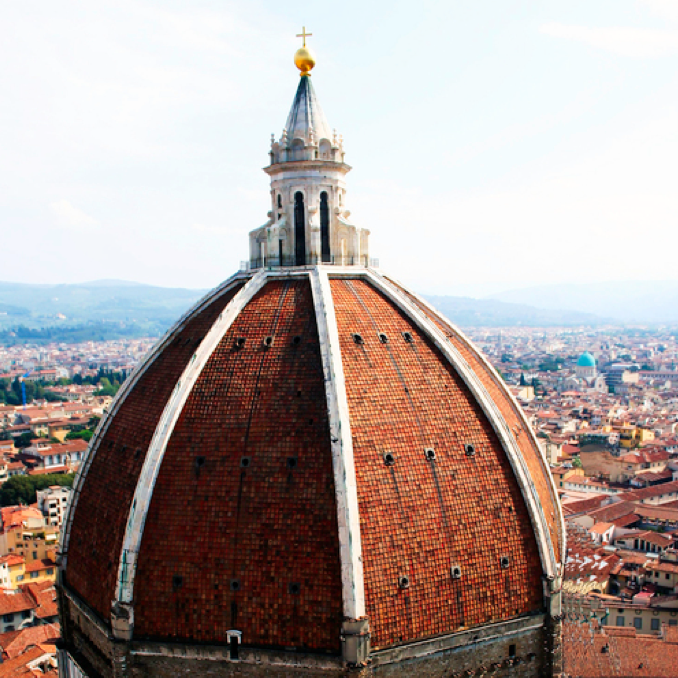In 1978, I took a year off from medical school and backpacked through Western Europe and the British Isles. One of the most memorable parts of this trip was the time I spent in Florence, Italy, where I first encountered the Duomo. I was amazed to see its pastel colors, interesting geometric shapes, and hordes of tourists gaping at it.
Florence Cathedral (taken from Wikipedia)
I recognize that there is a part of my personality that craves new experiences. For instance, once I have been to one part of the world I immediately start planning my next adventure to a different venue. This tendency seems to extend to my reading habits. When I complete a novel by an author, I might read other selections from his bibliography. However, I rarely go back to reread the original book a second time.
Now let's fast forward to 2007. My daughter, Erica, is a junior at UMass and is doing a semester abroad in Florence. My wife, Lisa, and I have now arrived in Italy to visit her, and on this day are going to the Duomo. I don't expect to be wowed by this experience because I have done it before. WRONG! Nothing is the way I remember it.
It's later in the afternoon, and we walk from our pension to the Cattedrale di Santa Maria del Fiore, or the Florence Cathedral (the Duomo). There are no cars around this area. The only way to approach it is on foot. I am consumed by the polychrome marble panels that appear in a variety of shades including pink and green. The panels are bordered by white. It's difficult to describe my initial impression, but incredulity fills my mind! This is not the way I remember this structure from when I had seen it 29 years earlier.
Construction on this basilica began in 1296 and was completed in 1436 in the late Medieval period. This cathedral complex is located in what is referred to as the Piazza del Duomo. It includes the Baptistery and Giotto's Campanile. This is one of the most sizable churches in Italy and the brick dome is the largest of its kind ever built. Construction of this edifice spanned 140 years with progress halted in 1358 due to the Black Death.
The facade of the building took centuries to complete as art and architecture evolved from the Medieval period to the Renaissance. The final rendition was completed in 1887 with a neo-Gothic design. I am fascinated by the sculpted statues that are omnipresent in the layout.
It is now time to attack the Campanile di Giotto. We begin the arduous climb up 414 steps which in the end is well worth it. Adjacent to the Basilica of Santa Maria del Fiore and the Baptistry of St. John, this bell tower rounds out the Florence Cathedral. Standing 227.9 feet high, Giotto's Campanile has 7 bells. It is widely appreciated that Giotto's accomplishment with this structure placed him in the company of Brunelleschi (Dome of the Florence Cathedral) and Alberti (Treatise De Re Aedificatoria) as one of the founding fathers of Italian Renaissance architecture.
From the top of Giotto's Campanile, we are able to get an incredible perspective of the beautiful red brick dome. Construction of this formation had taken place throughout the 14th century. However, it stood in a side aisle of the unfinished building due to architectural challenges that related to its being higher and wider than any dome that had ever been built. The decision to reject the traditional Gothic design in favor of a Mediterranean composition in 1367 is regarded as one of the first events of the Italian Renaissance. The challenges to the dome's construction were eventually overcome when Brunelleschi studied the great dome of the Pantheon in Rome. A decision was ultimately made to build this structure out of bricks that were lighter weight than stone and easier to form.
Having taken in the panoramic view of Florence from the top of the Campanile, we embark on the lengthy descent to street level in search of a bar to sit, have drinks and reflect on our day. I discover that I have a new found respect for the perspective of time and place. The Duomo has not changed in 29 years, but instead, I have. I am now becoming a photographer, and am apparently viewing things with more attention to lighting, color and architecture. Perhaps it is time to read Catcher in the Rye a second time.





